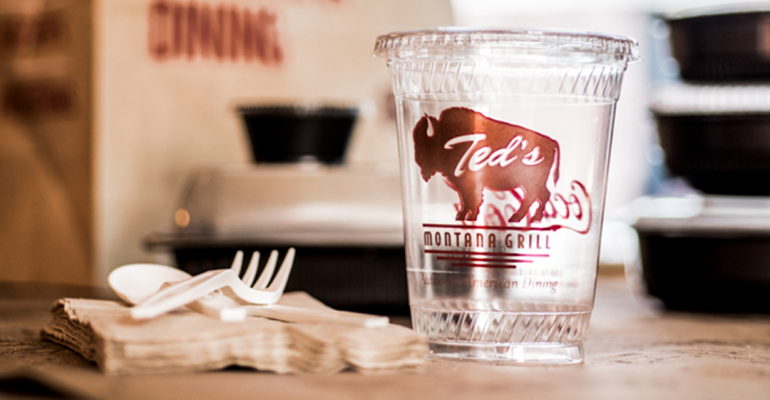When John Shin launched the now two-unit fast-casual concept Prawn in Los Angeles three years ago, he looked for disposable foodware that was compostable.
“Being in the food industry for so long and seeing the massive amounts of waste, I just wanted to make sure what we’re doing is sustainable,” he said.
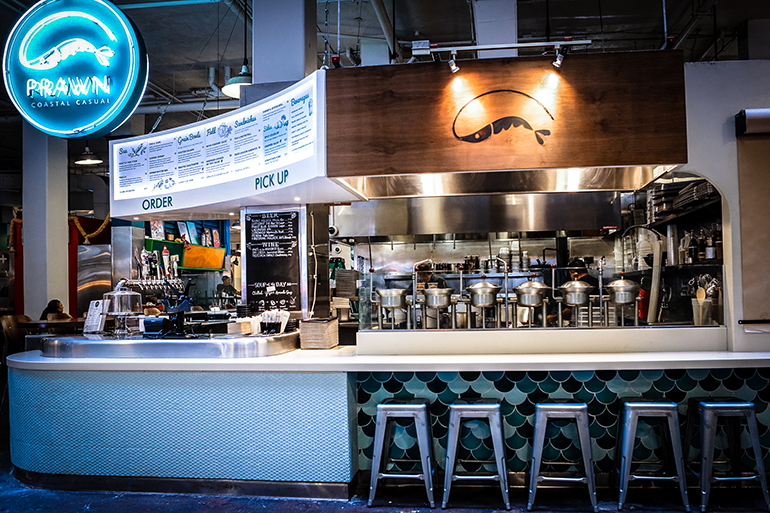
There have been challenges. To-go container lids tended to melt over the concept’s hot broth-based dishes, for example. Shin has seen guests throwing their compostable bowl into the recycling bins, which is a no no. In fact, Shin said he wasn’t sure how his compostable waste was handled at the food hall where the first Prawn debuted.
Shin and other restaurant operators say they are trying to do the right thing. But they are increasingly frustrated by the lack of infrastructure available that would allow them to deal with waste responsibly.
“It’s a travesty,” said Shin. “They basically created a product that the city and state hasn’t created an infrastructure for yet. If we’re going to fix this, regulation is needed. But there needs to be rules in place about how these materials are processed.”
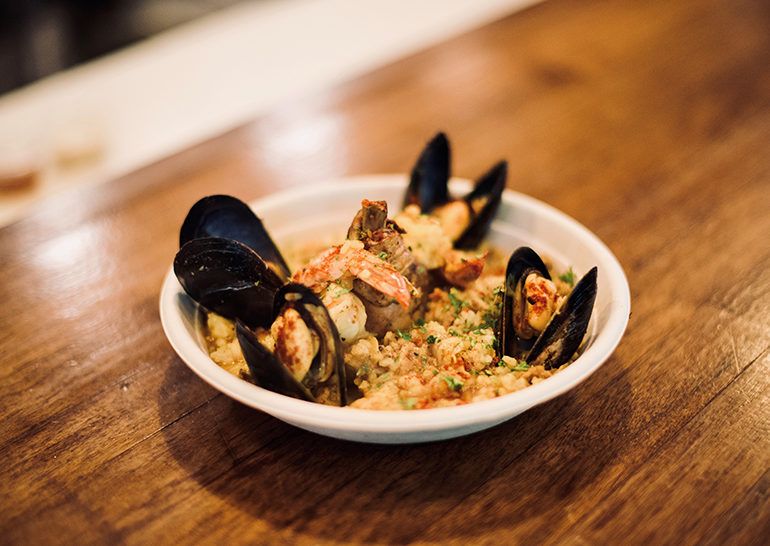
In fact, regulation is coming.
Fueled by reports of Texas-sized islands of plastic garbage floating in the Pacific Ocean, dead whales with bellies full of shopping bags, and a video of a sea turtle with a straw stuck up its nose, consumers and lawmakers are increasingly saying “no” to single-use plastic.
Environmental groups for years have painted a grim picture of a world increasingly littered with discarded plastic. Scientists are also raising concerns about the tiny fragments of broken-down microplastic, which have become omnipresent in soil and marine life.
Beach cleanup efforts by various groups have revealed that much of that waste is a product of the foodservice industry: straws, stirrers, cups and their lids, plastic bags and cutlery.
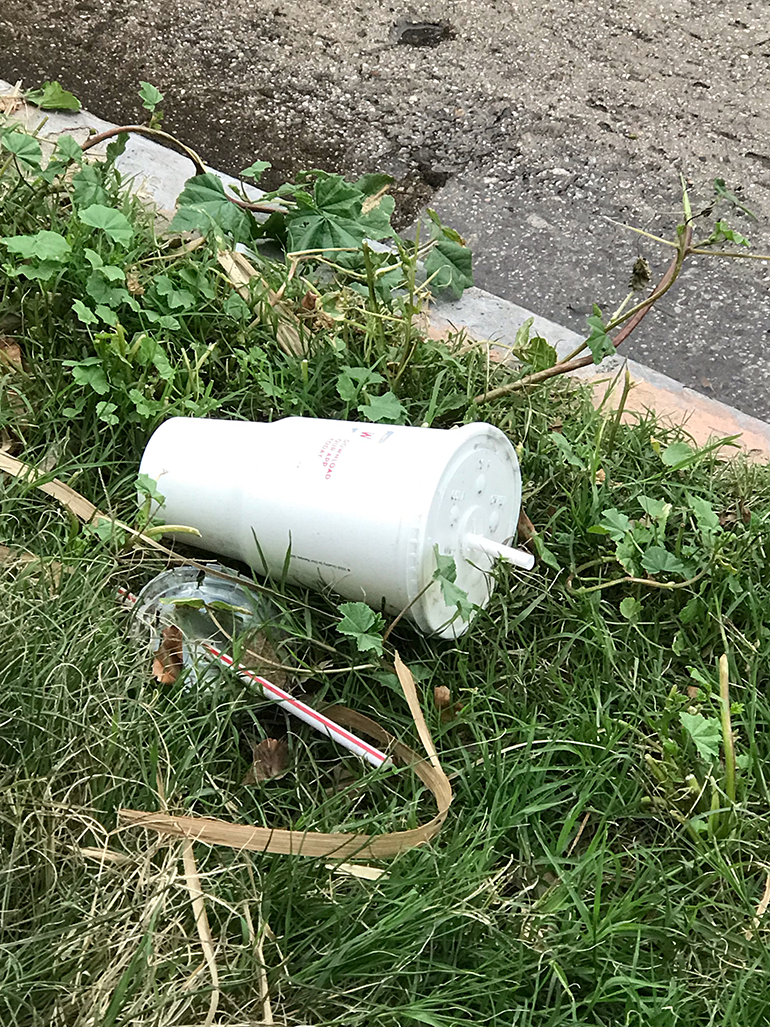
As a result, lawmakers are taking action. Last year, legislation restricting restaurants from offering plastic straws began cropping up across the country, joining the growing number of states and municipalities regulating the use of plastic bags and polystyrene.
More recent proposals go even further. Laws restricting restaurant use of plastic cutlery and other disposables have been enacted in California; New York; San Francisco, Seattle; Portland, Ore.; Berkeley, Calif.; Malibu, Calif.; and Boulder, Colo., and the bills keep coming.
In Hawaii, for example, state lawmakers are considering a bill that would prohibit the sale, use or distribution of plastic beverage bottles, utensils, stirrer sticks and polystyrene foam containers.
Maryland state lawmakers have adopted a statewide ban on polystyrene containers and cups, which awaits the governor’s signature.
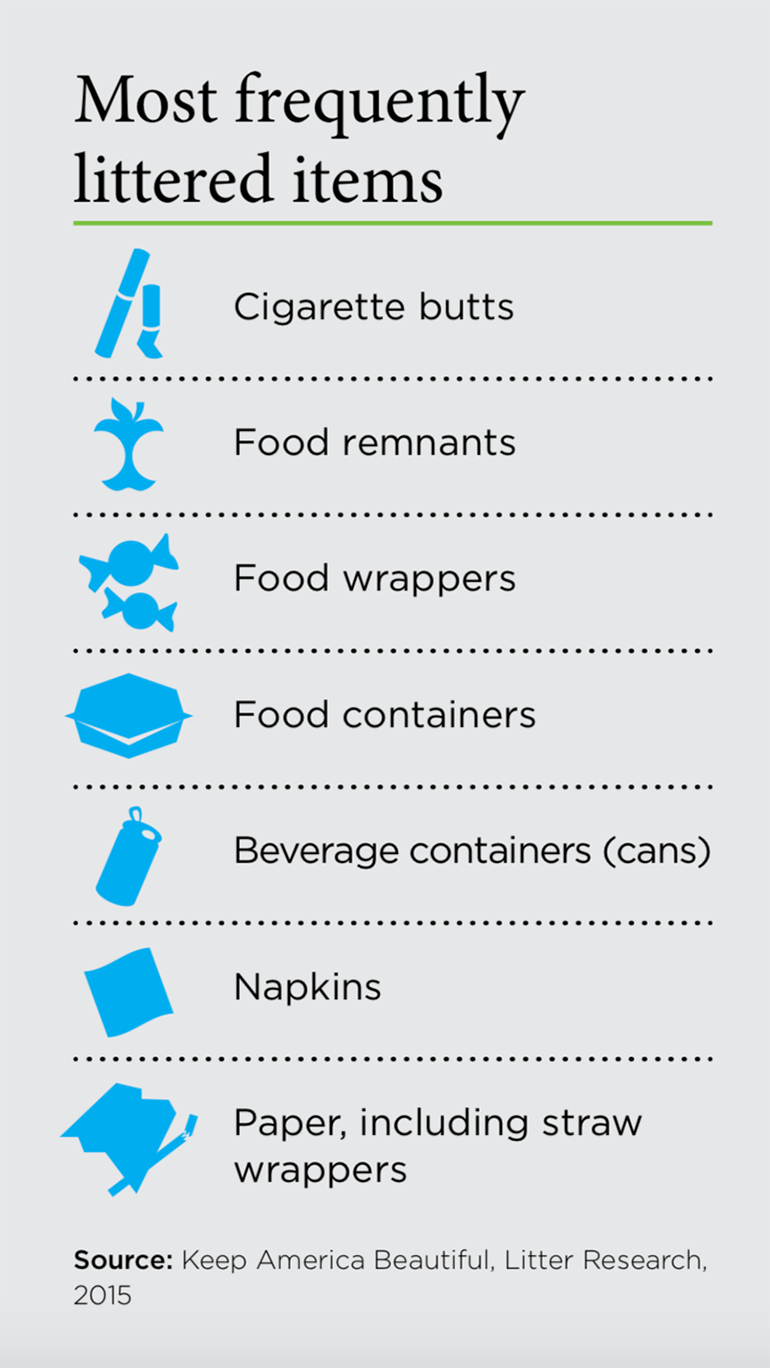
Such bills come at a time, however, when the restaurant industry has seen a boom in delivery and takeout — needed revenue generators that require a reliance on disposable packaging.
“If you look at how many people are offering delivery these days, that’s adding more performance criteria to that packaging,” said Lynn Dyer, president of the Foodservice Packaging Institute, a trade association for foodservice packaging.
“It has to hold hot foods hot and cold foods cold longer. It has to be designed to keep your fries nice and crispy.”
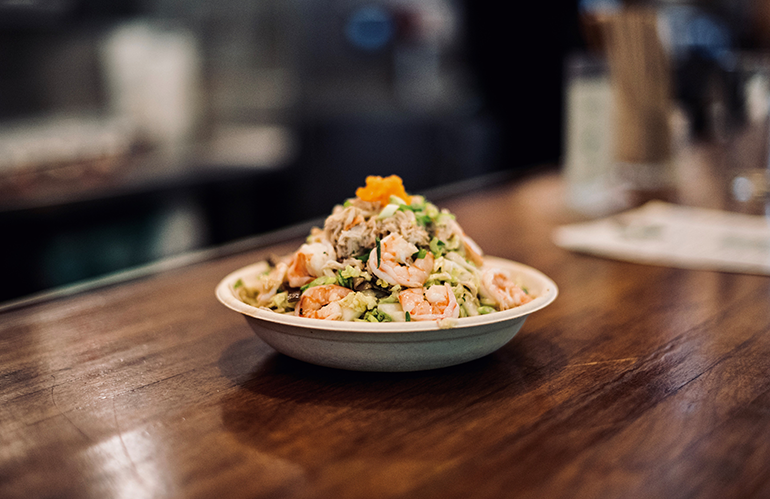
Those competing interests have restaurant operators caught in the middle and facing a quandary: How to find affordable packaging that will perform well in transit, appease regulators and consumers, as well as, hopefully, cause no harm to the planet.
“It’s more complex than ‘let’s ban all plastics,’” Dyer said. “That’s not going to solve the problem.”
The problem
Meanwhile, it remains a common view among restaurant operators and consumers that using any kind of biodegradable or compostable foodware is better than traditional plastic.
This may be partially true, in that they made be made from a renewable source, like plants. But many also believe such products will degrade eventually in landfills, and that isn’t the case.
“I call that wish-cycling: putting it in the bin and hoping for the best,” said Susan Thoman, managing director and principal of the Compost Manufacturing Alliance, based in Port Orchard, Wash., which represents about 20 facilities that take foodware packaging.
There is good reason for restaurants to rethink their use of plastic. While recyclable plastic can be a valuable material that can have a second life, plastic that has been contaminated by food often cannot be recycled so it ends up in landfills.
There are also growing reports that the U.S. recycling infrastructure is breaking down, with some cities canceling, cutting back or significantly increasing fees for recycling programs. China, once a leading importer of used plastic waste from the U.S., reportedly in January 2018 stopped accepting recyclable waste from other countries.
And, while the landscape of purportedly greener alternatives across the U.S. has grown dramatically, those alternatives also present challenges. The number of certified compostable products in the U.S., for example, has grown 80% over the past three and a half years to 9,000, according to the Biodegradable Products Institute, which sets certification standards
But compostable packaging requires certain conditions to break down into usable compost, and those conditions are generally found only in industrial facilities.
While a growing number of composting facilities collect food waste, they may not be permitted — or be willing — to accept compostable package waste also.
As a result, the compostable cartons, bowls and cups restaurants pay top dollar for can also end up in landfills, where they are buried and deprived of the conditions they need to degrade.
There are also biodegradable products on the market, but that is an umbrella term that needs to be qualified, referring to certain environments and timeframe. A cup that is marine degradable, for example, will react differently than one that is soil degradable.
Dyer of FPI prefers not to use the term biodegradable. “You want to look for recyclable or compostable,” she said. “Biodegradable makes it sound like it will magically disappear.”
Some states, like California, dictate how such terms can be used, outlawing “biodegradable” and “degradable” for plastic products and linking the term “compostability” to certain certifiable standards. Retailers like Walmart, Costco and Amazon have reportedly been sued for making packaging claims, though the cases were later settled.
Even worse, some compostable and biodegradable products end up being thrown into recycling bins, where they can contaminate batches of otherwise recyclable plastic — and vice versa.
Operators like Shin say the performance issues force them to mix materials — a bowl made of compostable sugarcane might be topped with a plastic lid less likely to melt, for example. But consumers are not likely to correctly sort such disposables.
Some composting facilities that take foodware won’t collect from a restaurant unless they can be sure that restaurant exclusively uses appropriate compostable products. One plastic fork tine in the compost can make a farmer look elsewhere for his soil health needs, so composters tend to be very picky about what they will collect.
“If restaurants pay a premium for compostables only to have it go to a composter and it doesn’t break down enough, and they end up sending it to a landfill, everybody loses,” said Thoman of the Compost Manufacturing Alliance.
Green wherever it goes
When it comes to disposables, managing waste that can be collected in restaurants is one thing. But that doesn’t necessarily address what happens when that cup, straw or container goes off site.
FPI estimates that, in a typical restaurant, roughly 70% of packaging leaves the premises through drive thru, takeout and delivery, said Dyer.
Residential recycling programs vary widely. In cities like Los Angeles, for example, residents can put uncooked fruit and vegetables into their yardwaste for composting, but the residential program does not collect compostable foodware — residents are instructed to deposit those in the regular trash.
That’s a challenge for environmentally conscious chains like the eight-unit Woodstock Pizza, based in San Diego, which has restaurants up the coast.
Woodstock has eliminated use of disposables for dine-in guests. But about 25% of sales go off premise, and there’s no way to control where that packing ends up, said Jade Waterman, Woodstock’s director of marketing.
“We haven’t solved all of our problems with delivery,” she said. “We have challenges with flatware. A lot of it out there easily cracks or melts if you try to cut a hot pizza.”
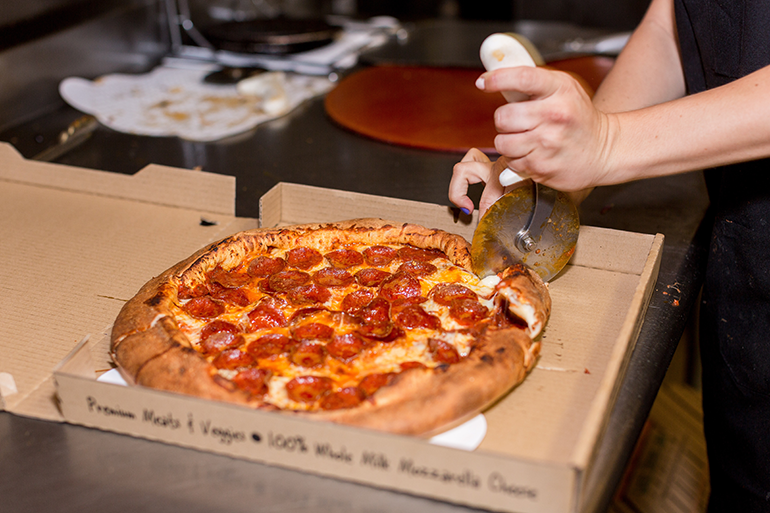
Woodstock’s cold salads are transported in plastic containers made from recycled content, she said. “Paper [cartons are] more earth friendly, but the salad wilts faster and it starts getting soggy. And we like a clear lid. Presentation matters.”
The chain, meanwhile, purchases pizza boxes, napkins and other paper products made from recycled paper. Woodstock restaurants offer recycling bins in stores. No polystyrene or plastic straws or bags are used.
But others say non-plastic materials just don’t hold up as well for delivery and to-go orders.
The 44-unit Ted’s Montana Grill, for example, was founded 17 years ago as a restaurant concept with the planet’s good health in mind, said co-founder George McKerrow.
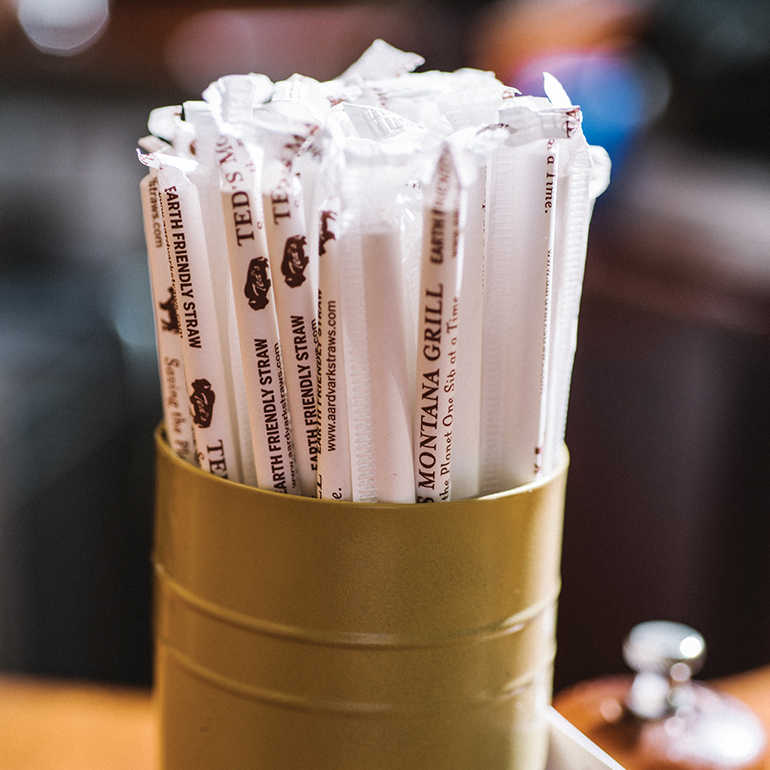
Ted’s has never offered plastic straws or stirrers, and McKerrow said the chain helped re-spark the now booming paper straw comeback. Ted’s to-go cutlery is made from cornstarch.
Ted’s doesn’t deliver, and to-go only accounts for about 7% of sales, he said. But for that Ted’s uses recycled plastic containers, which are also recyclable, he said.
“That’s one thing we had to give up on,” said McKerrow. “Guests don’t like leaky food in their car. And we use paper bags, not plastic, so we had to bend on that one.”
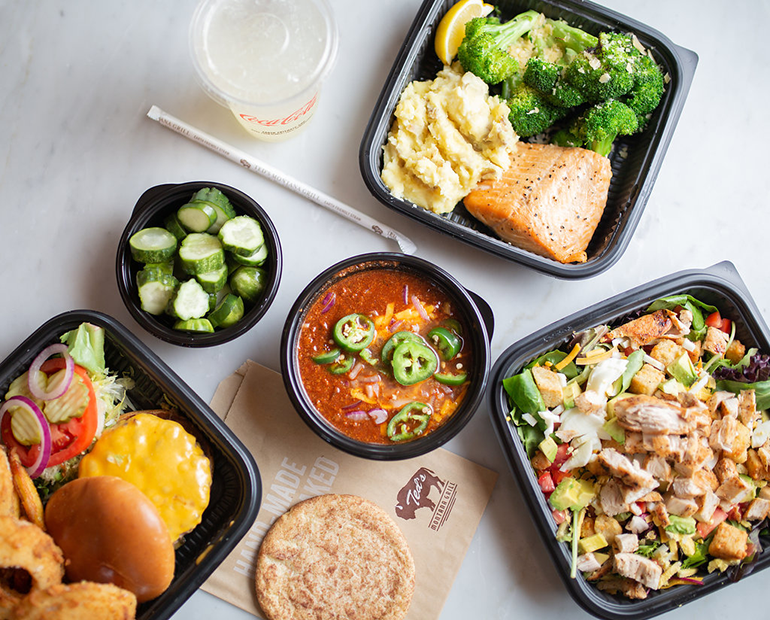
To-go cups are compostable, he said, though Ted’s operates in 16 states and only some markets have composting facilities, like Atlanta and Denver — though McKerrow noted, those composting services tend to come and go. “The composting industry is still very volatile.”
And though greener packaging tends to be more expensive, McKerrow said prices have improved dramatically since the early days.
“And, really, if the cost of a straw is going to break your back, then you have an unhealthy business to begin with,” he said.
Plastic patchwork
McKerrow said he is not a fan of increasing regulation around disposables. The restaurant industry has a responsibility to do the right thing, he said, but so do consumers.
“It’s a two-way street. Industry has an obligation to look for ways to be environmentally conscious … and at the same time, the consumer has an obligation,” he said. “If we get millions of people doing small things every day, we can make a big impact over time.”
Some fear that movement will create a patchwork of regulation that will be difficult for restaurants to navigate.
In Washington state, for example, a proposed bill would require packaging producers to submit a stewardship plan by 2022 to minimize their environmental impact and help fund waste management. The goal is for all packaging products sold in the state to be 100% recyclable, reusable or compostable by 2025, as well as encouraging use of post-consumer recycled content in packaging and, reducing the use of plastic packaging overall.
In California lawmakers adopted SB 1335 last year, which requires foodservice facilities for state agencies or on state-owned properties to use reusable, compostable or recyclable packaging. But the bill does not define what qualifies as compostable or recyclable materials.
The state agency CalRecycle now has until January 2021 to clarify the terms, specify criteria and outline a process, in conjunction with various related agencies and stakeholders. The next public hearing in the issue is scheduled for April 10 in Sacramento.
Meanwhile, one of the most comprehensive anti-plastic bills was adopted recently in Berkeley, Calif., where restaurants will soon be required to shift to only compostable cups, straws, cartons and forks for their disposable to-go foodware. The plan includes more city-installed composting bins.
Next year, restaurants in the city will also be required to charge a 25-cent fee for each disposable cup — even compostable cups. Businesses will get to keep the money to offset the cost, but the goal is to encourage guests to bring their own reusable cups.
In addition, dine-in guests must be served with reusable dishes and silverware, starting next year. The city also plans to test a program for reusable takeout containers, though it’s not clear what that might include.
Programs like GreenToGo in Durham, N.C., and GO Box in Portland and San Francisco, for example, are experimenting with reusable containers that can be collected from consumers, sanitized and redistributed to restaurants.
Berkeley is also considering a charge on disposable containers along with the cup fee to encourage guests to bring their own.
In fact, the bring-your-own trend is becoming popular enough to spark yet another proposed bill in California, which would require restaurants to have written food-safety procedures for handling consumers’ reusable containers.
Disposable packaging advocates like Dyer question whether bring-your-own cups and containers is a good idea.
“We expect that to be an operational challenge for foodservice brands,” said Dyer of FPI.
“Our entire industry was built over 100 years ago on the basis that disposable foodservice items are more sanitary. People have mugs that have been in their car and they’re bringing it into restaurants? How are restaurants going to be sure whatever germs might be on their customer’s mug don’t somehow transfer?”
The bigger picture
Erin Simon, director of sustainability research and development for the World Wildlife Fund in Washington, D.C., is hesitant to applaud cities like Berkeley for such efforts, in part because she fears legislative mandates could move too far ahead of the available infrastructure.
“I’m always worried about consequences when you prescribe solutions,” she said.
The fundamental solution will require a much broader change in infrastructure, from the way consumers are taught to handle their disposables, to the collection and ultimate end life of that plastic spoon — preferably as feedstock for either a recycler who will turn that spoon into another useful product or for a composter who will turn it into soil-boosting fertilizer.
Restaurant operators big and small have a key role to play in that change, Simon said. But it’s not just about finding better packaging.
“We really have to move away from our traditional model of solving these problems by looking for that replacement material with the hopes it will work better,” Simon said.
“It’s really challenging everybody to move beyond their own problem solving.”
Simon would like to see restaurateurs work within their communities, matching solutions with the available infrastructure and waste collection systems. And where that is lacking, working with local governments to bring such resources into play.
“If I’m a restaurateur in a community and there are others like me tackling this issue, how are we ultimately trying to engage and connect to manage our waste in a way that doesn’t send it to a landfill and doesn’t perpetuate this plastic issue,” she said. “We can’t just throw it over the wall and hope someone else figures out what to do with it.”
Contact Lisa Jennings at [email protected]
Follow her on Twitter: @livetodineout

